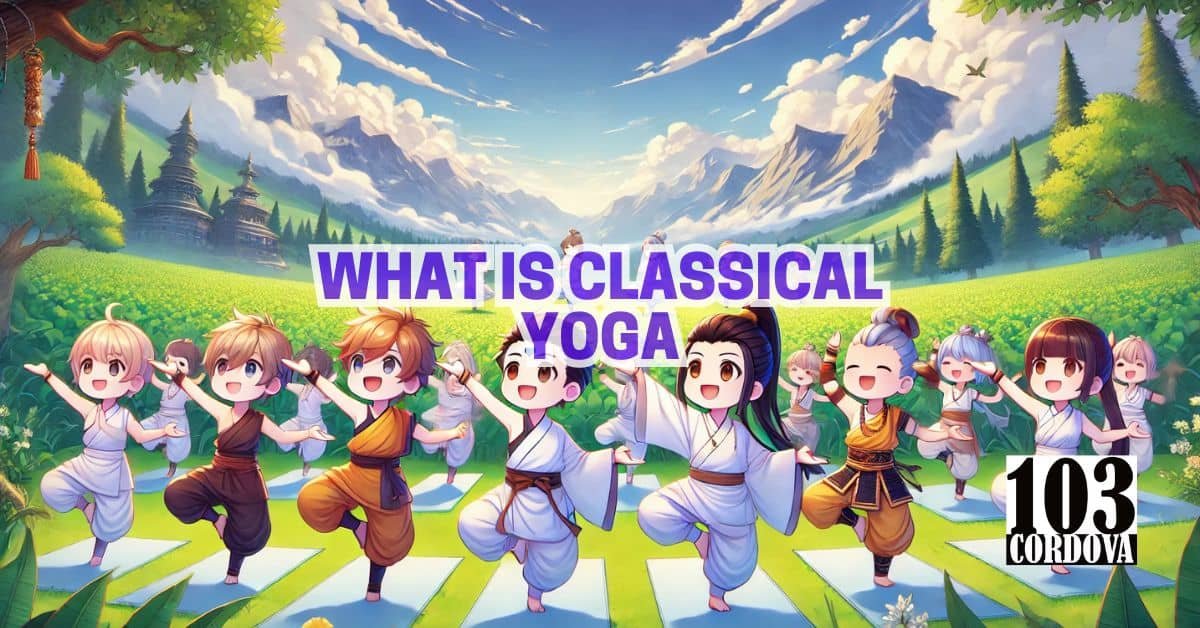Yoga is more than just physical exercise; it has deep roots in philosophy and spirituality.
Classical yoga and modern yoga, while related, differ in many important ways.
Classical yoga emphasizes the integration of mind, body, and spirit through various practices that include ethical behavior, meditation, and breath control.
Modern yoga, on the other hand, often focuses primarily on physical postures and fitness.
We’ll help you understand what classical yoga is and how it compares to the modern practices you may be familiar with.
1. The Ancient Origins of Classical Yoga
Classical yoga traces its origins back thousands of years to ancient India, making it one of the oldest systems for personal and spiritual development.
It evolved along with early Indian philosophy and religious traditions, such as Hinduism and Buddhism, which shaped its fundamental principles.
The practice was initially passed down orally by sages and teachers before being written down.
The most significant early text on classical yoga is the Yoga Sutras, compiled by the sage Patanjali, which serves as a foundation for understanding the spiritual purpose of yoga.
The ancient roots of classical yoga are still present in its teachings, which aim at uniting the practitioner with a higher sense of self.
🧘 How Yoga for Mental Health Training Can Help Manage Stress and Anxiety
2. Understanding the Core Philosophy of Classical Yoga
The core philosophy of classical yoga revolves around creating harmony between the mind, body, and spirit.
Unlike modern fitness-focused yoga, classical yoga seeks to help individuals go beyond mere physical health to achieve spiritual awareness.
The ultimate goal is to reduce suffering by overcoming ego-driven thoughts and desires.
Practitioners are encouraged to adopt a balanced way of living that includes ethical behavior, self-discipline, and compassion towards others.
By focusing on this holistic approach, classical yoga aims to create a deeper sense of fulfillment and purpose.
🧘 Exploring the Surprising Benefits of Infrared Hot Yoga for Your Health
3. The Eight Limbs of Yoga: A Key to Spiritual Growth
Classical yoga is structured around the “Eight Limbs of Yoga,” a systematic approach to spiritual development described by Patanjali in the Yoga Sutras.
The eight limbs are: Yama (ethical restraints), Niyama (personal observances), Asana (physical postures), Pranayama (breath control), Pratyahara (sensory withdrawal), Dharana (concentration), Dhyana (meditation), and Samadhi (ultimate bliss or union).
Each limb builds upon the previous one, providing a framework that guides practitioners from external disciplines to internal focus.
Ethical guidelines like Yama and Niyama form the foundation, while Asana and Pranayama prepare the body for meditation.
Ultimately, the Eight Limbs offer a holistic path for achieving personal transformation and inner peace.
🧘 How to Experience the Full Benefits of Hip-Opening Yoga: Tips and Techniques for Beginners
4. The Central Role of Meditation and Mindfulness in Classical Yoga
Meditation and mindfulness play a central role in classical yoga, as they are essential for achieving a calm and focused mind.
Practitioners use meditation to quiet the constant mental chatter and to develop greater awareness of their thoughts and emotions.
Mindfulness helps individuals stay present in each moment, fostering a deeper understanding of oneself.
Unlike modern yoga, which often places a heavy emphasis on physical activity, classical yoga prioritizes meditation as the primary means of attaining self-realization.
Through consistent meditation practice, individuals can experience lasting inner peace and clarity.
🧘 The Life-Changing Benefits of Postnatal Yoga for New Moms
5. Physical Postures (Asana) in Classical Yoga: Preparation for Meditation
In classical yoga, physical postures, or asanas, serve as a way to prepare the body for the deeper practice of meditation.
The primary purpose of asanas is to strengthen and steady the body, making it easier for practitioners to sit comfortably for extended periods during meditation.
Unlike the fitness-driven emphasis of modern yoga, classical yoga focuses on simplicity in movement, prioritizing alignment and balance.
The practice of asanas helps eliminate physical discomfort, so the mind can remain undisturbed during meditation.
Rather than being an end goal, asanas in classical yoga are just one step towards a larger journey of self-discovery.
🧘 The Life-Changing Benefits of Yoga Teacher Training: Why You Should Consider It
6. Breath Control (Pranayama): A Fundamental Practice in Classical Yoga
Breath control, known as pranayama, is an essential practice in classical yoga that helps manage life energy, or prana.
Pranayama involves different techniques of controlling inhalation and exhalation to maintain mental clarity and physical vitality.
By practicing pranayama, individuals can calm the nervous system, reduce stress, and prepare the mind for meditation.
Breath is viewed as a bridge between the mind and body, making it a powerful tool for cultivating inner peace.
In classical yoga, pranayama is just as important as the physical postures and plays a crucial role in balancing mental and emotional states.
🧘 The Positive Impact of Yoga Classes for 11-Year-Olds on Mental and Physical Health
7. The Ethical Guidelines of Classical Yoga: Yama and Niyama
Classical yoga places significant emphasis on ethical living through the guidelines of Yama and Niyama.
Yama includes moral restraints like non-violence (ahimsa), truthfulness (satya), and non-stealing (asteya), which help practitioners maintain a sense of integrity.
Niyama involves positive habits like self-discipline (tapas), contentment (santosha), and self-study (svadhyaya).
Together, Yama and Niyama act as a moral compass, guiding individuals to make conscious choices that lead to a balanced and meaningful life.
These ethical guidelines are fundamental to the practice of classical yoga, as they form the groundwork for deeper spiritual practices.
Without these principles, it is believed that true inner peace and growth cannot be achieved.
🧘 Can I Do Yoga and Exercise Together? How to Create a Complementary Fitness Plan
8. How Modern Yoga Focuses on Fitness Over Spirituality
Modern yoga, especially in Western cultures, often prioritizes physical fitness, flexibility, and body aesthetics over spiritual growth.
Many classes emphasize a workout-like approach that involves fast-paced, dynamic movements designed to build strength and burn calories.
While this style of yoga can improve physical health and reduce stress, it lacks the deeper focus on meditation and self-discipline found in classical yoga.
As a result, modern yoga frequently leaves out the ethical and mindful components that are integral to the traditional practice.
This emphasis on fitness over spirituality makes modern yoga fundamentally different from the comprehensive approach of classical yoga.
🧘 Is Yoga Teacher Training Worth It if You’re Not Planning to Teach?
9. The Commercialization of Modern Yoga: A Shift in Focus
The commercialization of modern yoga has transformed it into a popular fitness trend across the globe.
With the growth of yoga studios, clothing brands, and accessories, yoga has become more about marketing and consumerism than about inner reflection.
This shift has led to an emphasis on the outward appearance of yoga, such as performing impressive postures and wearing trendy attire.
The deep, introspective aspects of classical yoga have often been sidelined to accommodate what is marketable.
This shift in focus reflects how modern yoga has strayed from its original purpose of creating unity and inner harmony.
10. Integrating Spirituality and Wellness: Classical Yoga vs. Modern Yoga
Classical yoga integrates spirituality, ethics, and wellness into a single comprehensive practice that aims for personal transformation.
It involves an inward journey that includes meditation, moral behavior, and a balanced lifestyle to achieve true well-being.
Modern yoga, by contrast, often isolates the physical aspects of yoga from its spiritual and ethical roots.
While classical yoga offers a path toward enlightenment and peace of mind, modern yoga is largely about achieving physical fitness and relaxation.
Practitioners who integrate both approaches can experience the benefits of physical health while also gaining spiritual and emotional fulfillment.
💡 Conclusion
Both classical and modern yoga provide unique benefits, and each has something valuable to offer those seeking a healthier lifestyle.
Classical yoga provides a complete system for spiritual and ethical growth, while modern yoga offers accessible ways to improve physical health and relieve stress.
Embracing aspects of both can provide a more rounded experience where fitness is balanced with meditation and mindfulness.
Finding balance means respecting the roots of yoga while also adapting the practice to suit the needs of the present moment.
Combining classical and modern yoga can help create a well-rounded path to overall well-being and self-discovery.
🧘 Our Services
Discover the transformative power of yoga at our studio, conveniently located at 103 Cordova Tower, Marquinton Residences, Cirma Street, Sto. Niño, Marikina City.
We offer inclusive yoga classes for all ages, designed to improve flexibility, reduce stress, and enhance overall well-being.
Whether you’re a beginner or an experienced practitioner, our expert instructors create a supportive and energizing environment tailored to your needs.
Reach out to us today via Facebook, the contact form on our website, or by calling 09176225780 to start your journey toward a healthier and more balanced life.
Join us and experience the harmony of mind, body, and spirit!

